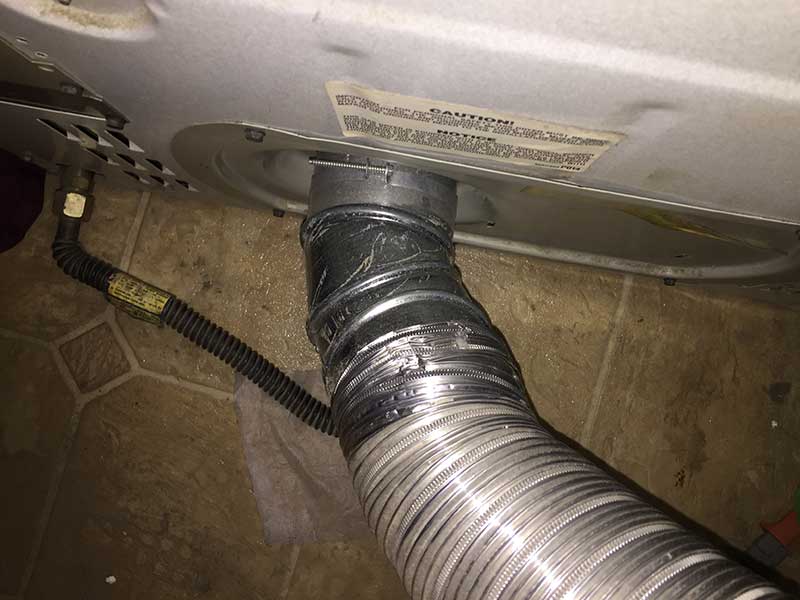Clothes Dryer Exhaust Systems
How do clothes dryers cause fires?
In 1998, it was estimated by The US consumer product safety commission that clothes dryers caused over 15,000 fires. The most common reason of fires is the lack of upkeep, poor quality installation and the misuse of duct materials. The dryer’s lint filter only picks up a portion of the lint that is produced in the drying process, even though some can perform better than others. After some time, the lint piles up and increases throughout the dryer and the duct system decreasing airflow which in turn causes the dryer to function at elevated temperatures thereby developing the unforeseeable of something malfunctioning and causing a fire. These fires in dryers generally begin under or in the interior of the machine. The draft from the dryer forces the fire into the exhaust duct and usually causes a house fire. The likelihood of the fire spreading increases with the use of plastic or foil ducts with plastic being more unpredictable.
Home inspectors and risk
Most people are not fully aware of what risks clothes dryer exhaust systems represent. More than usual, dryer exhaust ducts are not given the proper attention they deserve, are often installed poorly and are rarely maintained. Once they have been installed they are forgotten. Home inspectors help you become familiar of the current guidelines and principles and how to recognize symptoms and signs of probable hazards and serve to educate you and others.
Now
In the past dryers were placed in a short distance from the outside wall and their straight exhaust ducts functioned well and the need for maintenance and inspection was simple. Currently, laundry rooms are situated anywhere in the home, and are usually installed on an upper level with an extended pipeline generally a blockage in airflow.
Problems
Generally, the dryer is pushed too close to the wall causing the transition duct to be crushed which immediately decreases the airflow and causes a trap for lint to accumulate.
Preventions
In the past, the usual dryer duct was a white vinyl spiral wire duct and was receptive to overheating and melting; the spiral creation caused agitation decreasing airflow leading to lint accumulation inside the ribs. Today, metal exhaust ducts are widely recommended by the Consumer Product Safety Commission. The metal dryer exhaust achieves optimal airflow, minimizes lint accumulation and reduces temperatures of the dryer.
Here are some warning signs to keep a look out for
- If your clothes
are taking longer than usual to dry
- Clothes are
hotter than usual at the end of the cycle
- The exterior of
the dryer feel hot
- If your laundry
room feels more humid that usual
- If you smell a
burning odor
